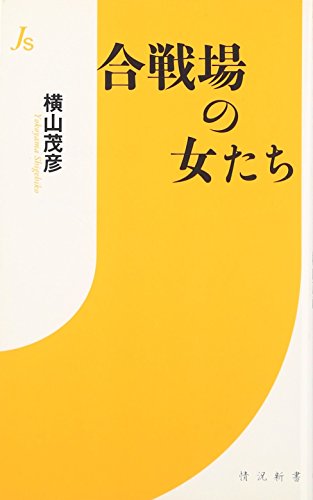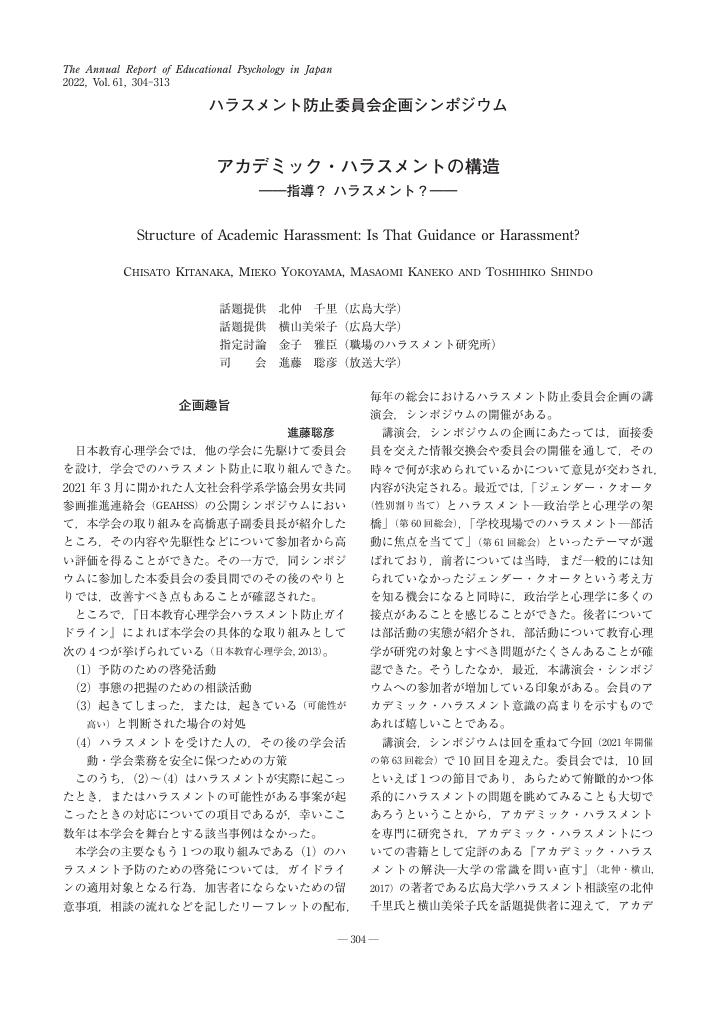5 0 0 0 OA 鎌倉・室町期日本の貨幣経済
- 著者
- 横山 和輝
- 雑誌
- オイコノミカ (ISSN:03891364)
- 巻号頁・発行日
- vol.47, no.3-4, pp.25-41, 2011-03-01
律令制が形骸化し,荘園公領制が形成されるとともに貨幣経済が進展し,14世紀までには交換手段として貨幣が普及していた.この貨幣経済の初期段階において,米価ならびに地価は低下傾向にあった.貨幣経済が進展するなか,貨幣価値が上昇することで,貨幣保有者の交渉力が増大し,売り手の提示価格に対する引下げ効果が生じたのである.
5 0 0 0 OA 肩関節挙上動作に生じる脊椎伸展運動には主に下位胸椎が貢献する
- 著者
- 西村 朋美 蒲田 和芳 横山 茂樹 杉野 伸治 一瀬 浩志
- 出版者
- 公益社団法人 日本理学療法士協会
- 雑誌
- 理学療法学Supplement Vol.34 Suppl. No.2 (第42回日本理学療法学術大会 抄録集)
- 巻号頁・発行日
- pp.C0897, 2007 (Released:2007-05-09)
【目的】肩関節挙上動作における肩甲上腕リズムについてはInman(1944)以降、それに付随する脊椎伸展運動についてはKapandji以降、数多くの文献に記載されている。しかしながら、肩甲上腕リズムと脊椎伸展の運動学的な連鎖については十分検証されていない。我々は「肩甲骨が胸郭上で安定した肢位を得るには接触面積を増大させる必要があり、脊椎伸展は肩甲骨の位置と安定性を最適化するための胸郭の形状変化に貢献する」という仮説を立てており、本研究では脊椎伸展運動の主要な貢献部位を特定することを目的とした。【方法】本研究は対照群のない縦断研究であり、対象の選択基準を脊柱及び肩関節に既往のない20代男性10名(平均年齢25.4±2.5歳、平均体重60.7±6.34kg、平均身長171.0±6.27cm、平均BMI 20.78±2.09)とした。測定項目は、肩関節屈曲肢位0°30°60°90°120°150°、最大屈曲位における脊柱矢状面弯曲とした。脊椎弯曲の計測にはインデックス社製スパイナルマウスを用い(文献1)、第1胸椎から第3仙椎間の各分節角度を2回計測して各セグメントの屈曲角の平均値を求めた。得られた結果から、上位胸椎、下位胸椎、および腰椎の3つのセグメントの屈曲角度の合計を算出し、肩関節の肢位による弯曲の変化を比較した。統計分析には分散分析およびTukey/Kramer法を用い、有意水準をp<0.05とした。【結果】下位胸椎後弯角では分散分析で有意(p<0.05)であり、屈曲0度と比較して最大屈曲位において有意な後弯角の減少(脊椎伸展)が認められた。上位胸椎および腰椎には有意な運動は認められなかった。【考察】肩関節最大挙上に伴う脊椎伸展の主要貢献部位は下位胸椎であることが示された。スパイナルマウスについては、後弯に対して信頼性高く、前弯を過小評価することが示された(文献1)。しかしながら、前弯部位であっても個人内の変化は十分検出できるため、我々は腰椎伸展が生じないという結果は信頼性のある結果であると解釈している。本研究の対象は、肩関節や脊椎に疾患のない健常者若年成人であり、この結果は正常な肩関節運動における脊椎・肩甲骨リズムを反映しているものと結論付けられる。今後、下位胸椎の伸展が胸郭の形状および胸郭と肩甲骨の接触面積への貢献について検証を進める必要がある。【臨床的意義】この研究の結果、肩関節疾患の治療においては、最大挙上位を獲得させるためには脊椎の中でも特に下位胸椎の伸展可動性および胸椎部の脊柱起立筋の機能改善が必要であることが示唆された。また下位胸椎伸展に伴う胸郭の可動性についても考慮が必要である。【引用文献】 文献1:松尾礼美ら(第41回日本理学療法学術大会、2006)
5 0 0 0 OA 政治的会話の橋渡し効果:政治的会話が政治参加を促進するメカニズム
- 著者
- 横山 智哉 稲葉 哲郎
- 出版者
- 日本社会心理学会
- 雑誌
- 社会心理学研究 (ISSN:09161503)
- 巻号頁・発行日
- vol.32, no.2, pp.92-103, 2016-11-30 (Released:2016-11-30)
- 参考文献数
- 54
- 被引用文献数
- 1
Recent studies find that political talk influences political participation. However, as of yet, there has been no clear demonstration of how political talk translates into increased political participation. This study proposes a bridging effect, which reduces the perceived psychological distance between citizens and politics. In order to test this explanation, we collected panel data on an online national volunteer sample in November 2012 and January 2013. Findings suggest that the direct relationship between political talk and participation in governmental politics may be mediated through perceived psychological distance to politics. These findings support the bridging effect explanation.
5 0 0 0 OA LSTMを用いた俳句自動生成器の開発
- 著者
- 米田 航紀 横山 想一郎 山下 倫央 川村 秀憲
- 出版者
- 一般社団法人 人工知能学会
- 雑誌
- 人工知能学会全国大会論文集 第32回全国大会(2018)
- 巻号頁・発行日
- pp.1B2OS11b01, 2018 (Released:2018-07-30)
深層学習を使用した芸術の作成が近年注目を集めている。 また、日本で古くから親しまれている芸術として俳句がある。 そこで、俳句を作成する方法として一般的な「モチーフから俳句を作る」ということを深層学習を使用して行うこと で、芸術作成としての深層学習の有用性を示す。 まず、我々は大量の過去の俳句に基づいてLSTMを訓練し、LSTMに文字列を生成させる。 2つめに、生成された文字列から俳句としての条件を満たすものを抽出し、モチーフ画像に適合するかどうかの評価値を算出する。 評価値が高ければ、生成された俳句がモチーフ画像に適合しているとみなす。 この過程で、LSTM が俳句としてのルールを学習できているかを確認するための実験を行った。
5 0 0 0 OA 東アジア圏の複言語主義共同体の構築―多言語社会香港からの示唆
- 著者
- 河合 靖 佐野 愛子 小林 由子 飯田 真紀 横山 吉樹 河合 剛 山田 智久 杉江 聡子 三ツ木 真実 今泉 智子 萬 美保
- 出版者
- 北海道大学
- 雑誌
- 基盤研究(B)
- 巻号頁・発行日
- 2015-04-01
本研究の目的は,東アジア圏における多層言語環境での複言語主義的な言語政策や人材育成の必要性の考察である。香港では多層言語環境が人々に日本と異なる影響を与えている。言語とコミュニケーション,言語教育政策と学習者,教育と技術の三つの視点からその影響を見ることで,多層言語環境化する日本が考えるべき問題を洞察した。日本がモノリンガル社会の心的制約を克服して,複言語主義的社会モデルに移行し,複数言語を行き来する態度と能力を持つトランスランゲージング的人材を育成するための知見が得られた。本研究の研究成果は,研究成果報告書(250頁)として編集・印刷された。
5 0 0 0 同調的な表情変形技術を用いた遠隔コミュニケーションの拡張
- 著者
- 鈴木 啓太 横山 正典 吉田 成朗 望月 崇由 布引 純史 鳴海 拓志 谷川 智洋 廣瀬 通孝
- 雑誌
- 情報処理学会論文誌 (ISSN:18827764)
- 巻号頁・発行日
- vol.59, no.1, pp.52-60, 2018-01-15
本研究では,カスタマーセンタや,遠隔授業などの遠隔コミュニケーションにおいて,対話相手との同調的な感情表出を支援するビデオチャットシステムを提案する.他者の表情を模倣する「ミラーリング」は,他者と友好な関係を築くうえで有効である.しかし,継続的な感情の表出と抑制には本人の意識的な努力を必要とする場合があり,感情労働による消耗を助長させる恐れがある.他方,遠隔コミュニケーションにおいては,ビデオチャットのような情報メディアを介する段階でコミュニケーションに関する要素に情報的変調を加え,感情表出を補助することで対話者間の共感を深めて,コミュニケーションを拡張することができると考えた.本研究では,表情認識センサによって取得した自身の表情と同調するように,対話相手の表情を画像処理によって変化させることで,疑似的なミラーリングを発生させる.提案システムを用いた評価実験として,表情変形が施される模倣者と,自身の表情と同調した表情変形を観測する被模倣者のペアで会話してもらった.その結果,模倣者と被模倣者の両者に対して,会話の円滑さや,共感度の指標が向上することが示唆された.疑似的なミラーリングの効果が,被模倣者だけでなく,模倣者に対しても影響していることが分かった.
5 0 0 0 OA 総合地域研究所 平成28年度「共同研究」 非行少年の立ち直り支援 児童自立支援施設における自立支援の現状と課題 : 民官連携 : 児童自立支援施設と児童養護施設の連携と取り組みから
- 著者
- 覚正 豊和 矢作 由美子 横山 潔 Toyokazu Kakusho Yumiko Yahagi Kiyoshi Yokoyama
- 出版者
- 敬愛大学総合地域研究所
- 雑誌
- 敬愛大学総合地域研究 : 敬愛大学総合地域研究所紀要 = Comprehensive area studies : annual bulletin of the Keiai Institute for Area Studies (ISSN:21890889)
- 巻号頁・発行日
- no.7, pp.109-121, 2017-03-31
5 0 0 0 OA イラスト・マンガで素粒子物理学をいかに説明するか
- 著者
- 秋本 祐希 横山 広美
- 出版者
- 北海道大学高等教育推進機構 高等教育研究部 科学技術コミュニケーション教育研究部門(CoSTEP)
- 雑誌
- 科学技術コミュニケーション (ISSN:18818390)
- 巻号頁・発行日
- vol.18, pp.47-57, 2015-12
素粒子は顕微鏡等を用いても目にすることができず,波と粒子の両方の性質を持つという性質上,イメージすることが難しい.素粒子を扱う素粒子物理学は,それゆえ直感的にわかりにくい分野である.そこで我々は,素粒子物理学を直感的にわかりやすく説明し,また同時に関心を持ってもらうため,わかりやすいコミュニケーションのツールとして,イラストとマンガに着目した. 本稿では,最初に「わかる」という概念を整理し,その上でイラストが,想像することが困難な事柄を「想像できるものに例えて」その概念を大枠で説明することに役立つことを主張する.例えばイラストでは,素粒子を目に見える特徴を持ったキャラクターにすることで,これが可能になった.さらにマンガでは,素粒子や素粒子実験をキャラクターとして用い,素粒子物理学のエッセンスを組み込んだストーリーにすることで,文章だけでは興味を持ちづらい事項を,親しみやすく提示することができた.また特徴的な活動のひとつは,科学技術に関する審議会の議事録をイラストで説明したことだ. こうした取り組みは,これまで単に「わかる」ためのみに用いられていたイラストを,双方向のコミュニケーションの土台として活用できる.
5 0 0 0 IR 〈書評〉 藤本猛,2014,『風流天子と「君主独裁制」北宋徽宗朝政治史の研究』
- 著者
- 横山 博俊
- 雑誌
- 都市文化研究 (ISSN:13483293)
- 巻号頁・発行日
- vol.17, pp.146-148, 2015-03
5 0 0 0 OA 浜名湖と富士五湖堆積物を用いた津波および古地震研究の展望
- 著者
- 中村 淳路 Boes Evelien Brückner Helmut De Batist Marc 藤原 治 Garrett Edmund Heyvaert Vanessa Hubert-Ferrari Aurelia Lamair Laura 宮入 陽介 オブラクタ スティーブン 宍倉 正展 山本 真也 横山 祐典 The QuakeRecNankai team
- 出版者
- 日本地球惑星科学連合
- 雑誌
- 日本地球惑星科学連合2016年大会
- 巻号頁・発行日
- 2016-03-10
Great earthquakes have repeatedly occurred along the Nankai Trough, the subduction zone that lies south of Japan’s heavily industrialized southern coastline. While historical records and geological evidence have revealed spatial distribution of paleo-earthquakes, the temporal variation of the rupture zone is still under debate, in part due to its segmented behavior. Here we explore the potential of the sediment records from Lake Hamana and Fuji Five Lakes as new coherent time series of great earthquakes within the framework of the QuakeRecNankai project.We obtained pilot gravity cores form Lake Hamana and the Fuji lakes Motosu, Sai, Kawaguchi, and Yamanaka in 2014. In order to image the lateral changes of the event deposits, we also conducted reflection-seismic survey. Based on these results, potential coring sites were determined and then 3–10 m long piston cores were recovered from several sites in each lake in 2015. The cores consist of 2 m long sections with 1 m overlaps between the sections allowing us to reconstruct continuous records of tsunamis and paleo-earthquakes. In this presentation we introduce the progress of QuakeRecNankai project and discuss the potential of the lakes as Late Pleistocene and Holocene archives of tsunamis and paleo-earthquakes.
- 著者
- 前田 奈穂 大坊 郁夫 前田 貴司 岸野 文郎 北村 喜文 高嶋 和毅 横山 ひとみ 藤原 健 林 良彦
- 出版者
- 一般社団法人電子情報通信学会
- 雑誌
- 電子情報通信学会技術研究報告. HCS, ヒューマンコミュニケーション基礎 (ISSN:09135685)
- 巻号頁・発行日
- vol.109, no.457, pp.49-54, 2010-03-01
- 参考文献数
- 17
- 被引用文献数
- 3
本研究の目的は,非言語手がかりと関係開始スキルの関連について,話者,会話相手,第3者のそれぞれの観点から検討することである.初対面の大学生で同性同士の66人(男性51人,女性15人)を対象に行った会話実験データを以下のように検討した.関係開始スキルについて自己評定,他者評定,第3者評定を測定することで,非言語手がかり(腕の動き,対人距離,相手に顔を向けている割合,単独発言時間,単独発言頻度,単独発言平均時間)との関連について,レンズモデル(Brunswik, 1956)を用いて検討した.その結果,自己評定,他者評定,第3者評定,いずれにおいても,腕の動きと関係開始スキルの間に正の関連がみられた.
- 著者
- 松田 博史 荒野 泰 岡沢 秀彦 岡村 光英 水村 直 横山 邦彦
- 雑誌
- 核医学 : 日本核医学会機関誌 : the Japanese journal of nuclear medicine (ISSN:00227854)
- 巻号頁・発行日
- vol.49, no.1, pp.1-14, 2012-02-29
- 被引用文献数
- 1
- 著者
- 横山 彰三
- 出版者
- 一般社団法人 日本オリエント学会
- 雑誌
- オリエント (ISSN:00305219)
- 巻号頁・発行日
- vol.35, no.2, pp.72-91, 1992 (Released:2010-03-12)
The purpose of the present paper is to make a linguistic analysis of Tâleqâni's Osul-e Dastur-e Zabân-e Fârsi which is one of the typical Persian Grammars written on the traditional model. I also intend to criticize some of his grammatical description and his own view of Persian language and grammar in general.Tâleqâni, together with other traditional grammarians, classifies the parts of speech into nine, i. e. nouns, adjectives, verbs, pronouns, adverbs, prepositions, interjections, conjunctions, numerals. In the following discussions I will mainly focus on the noun ('esm) and verb (fe'l) treated in the chapter 2 and 5, which make up most of its volume of the part 1, and comment on his description of them.His grammar, as is the case with his contemporary ones, has the following characteristic features:1)His framework of classification o parts of speech is based on the traditional Latin and Islamic grammars, thus causing confusion of classification criteria.2) No phonological or phonetic descriptions are found. Instead, the rules of orthography in the declentional and conjugational systems are rather minutely stated.3) No distinction between synchronic and diachronic approaches is made. His main interest is directed to the correctness of writing. Correctness, in this case, means that it is modeled on classic writings, not on contemporary writings. Thus his linguistic materials for description are mostly taken from classical writers, such as Sa'di, Hâfiz, Ansari, etc.
5 0 0 0 OA 明治神宮の森の気候緩和機能・大気浄化機能の評価 : (1) 1996年夏期集中観測
- 著者
- 神田 学 森脇 亮 高柳 百合子 横山 仁 浜田 崇
- 出版者
- 社団法人日本気象学会
- 雑誌
- 天気 (ISSN:05460921)
- 巻号頁・発行日
- vol.44, no.10, pp.713-722, 1997-10-31
- 参考文献数
- 15
- 被引用文献数
- 31
明治神宮の気候緩和機能・大気浄化機能を熱収支・汚染物質吸収量の観点から定量的に把握することを目的として1996年8月に集中観測を行い, 以下の成果が得られた. 1) 神宮の森の放射収支・熱収支が算定された. 正味放射量の約7割は蒸発潜熱に変換されており, 日中に神宮の森が放出する水分量は, 1秒あたり約150kg (ペットボトル100本分) に達する. また都市域の熱収支 (神田ほか, 1997) と比較することにより, 神宮の森の気候緩和機能が定量的に把握された. 2) ポロメーターにより計測される1枚の葉の蒸散・気孔コンダクタンスは, 計測地点の局所的な気象条件の影響を大きく受けるため, そのままでは群落全体の蒸散量に換算できないことが示された. 3) 晴天日の夕方の一般風が弱まる時間帯において, 0.5ms^<-1>以下の弱い森林吹き出し風の存在が示された. 4) 林冠上における汚染物質の鉛直下向きフラックスを傾度法を用いて算定したところ, 日中の平均値として, O_3は約0.30ppb ms^<-1>, NO_2は約0.11PPb ms^<-1>となり, 神宮の森による汚染物質吸収量が定量的に把握された. 5) 神宮の森で測定した汚染物質の濃度変動特性を検討した結果, 物質によりその挙動が異なった. 特にSPM濃度の日変化は夜間にピークをもち, 近接市街地とは逆の傾向を示す. これは夜間森林上に形成される安定層の影響であることが推察された.
4 0 0 0 OA 不律儀の獲得 ― 倶舎論安慧疏・業品第 36 偈 cd 句の梵文和訳 ―
- 著者
- 加納 和雄 Jowita Kramer 横山 剛 田中 裕成 Sebastian Nehrdich 中山 慧輝 小南 薫 小谷 昂久
- 出版者
- 対法雑誌刊行会
- 雑誌
- 対法雑誌 (ISSN:24355674)
- 巻号頁・発行日
- vol.4, pp.39-85, 2023 (Released:2023-12-31)
Sthiramati's Tattvārthā, the extensive commentary on the Abhidharmakośa and its bhāṣya, had been known only in the form of fragments of Chinese translations, fragments of Uyghur translation from the lost Chinese translation, and Tibetan translation. In recent years, however, the original Sanskrit text of the Tattvārthā has become available, and the results of the research have been published. As for the chapter of Karmanirdeśa (Chapter 4), its Sanskrit text on Abhidharmakośa verses 4.34–37 has been published. In this paper, we will continue the translation of the Tattvārthā focusing on verse 4.36cd. The verse discusses the scope and motivation of the acquisition of non-restraints (asaṃvara). The non-restraints is the non-information (avijñapti) that keeps away the good and habituates the bad, and is said to be possessed by those who kill for their own lives (slaughterers, hunters, executioners, etc.) and by those who steal (thieves, etc.). Verses 36cd discusses to whom, to which evil karma, and by which cause the non-restraints is acquired. In addition, this paper will present the texts and translations of Vasubandhu's Abhidharmakośa/bhāṣya and Saṃghabhadra's 順正理論 in order to clarify the developement of interpretation from Vasubandhu via Saṅghabhadra to Sthiramati. Then, we will identify passages of Saṅghabhadra that Sthiramati seems to silently borrow, and try to recover some parts of the original text of Saṃghabhadra.
4 0 0 0 OA 東京都奥多摩町白丸鉱山産ベニト石
- 著者
- 西久保 勝己 松原 聰 宮脇 律郎 横山 一己
- 出版者
- 一般社団法人日本鉱物科学会
- 雑誌
- 日本鉱物科学会年会講演要旨集 日本鉱物科学会 2007年度年会
- 巻号頁・発行日
- pp.205, 2007 (Released:2008-09-02)
東京都奥多摩町の白丸鉱山より、新たにベニト石Benitoiteを見出した。ベニト石は、曹長石、マースチュー石、ガノフィル石-多摩石系鉱物、方解石などと密な集合をなす。紫外線短波で明るい青白色の蛍光を発する。
4 0 0 0 OA 低頻度の通所リハビリテーションによって麻痺手の機能改善を示した脳卒中後重度片麻痺の一例
- 著者
- 横山 広樹 竹林 崇 花田 恵介 鈴川 理沙
- 出版者
- 一般社団法人 日本作業療法士協会
- 雑誌
- 作業療法 (ISSN:02894920)
- 巻号頁・発行日
- vol.41, no.4, pp.494-501, 2022-08-15 (Released:2022-08-15)
- 参考文献数
- 15
通所リハビリテーションを利用する脳卒中慢性期の重度上肢機能障害例に対し,ボツリヌス療法と,Constraint-induced movement therapy(以下,CI療法)に準じた課題指向型練習やTransfer packageを併用して介入した.1回20分の介入を週2回,約1年間継続したところ,麻痺手の運動機能や使用頻度,痙縮の程度がいずれも測定誤差を超えて改善した.加えて,ボツリヌス療法における施注量が減少し,定期であった施注間隔も長くなった.低頻度であっても適切な介入を実施することで,慢性期の重度上肢麻痺を改善できる可能性が示唆された.
4 0 0 0 OA アカデミック・ハラスメントの構造 ―指導?ハラスメント?―
- 著者
- 北仲 千里 横山 美栄子 金子 雅臣 進藤 聡彦
- 出版者
- 一般社団法人 日本教育心理学会
- 雑誌
- 教育心理学年報 (ISSN:04529650)
- 巻号頁・発行日
- vol.61, pp.304-313, 2022-03-30 (Released:2022-11-16)
- 参考文献数
- 2
- 被引用文献数
- 1


